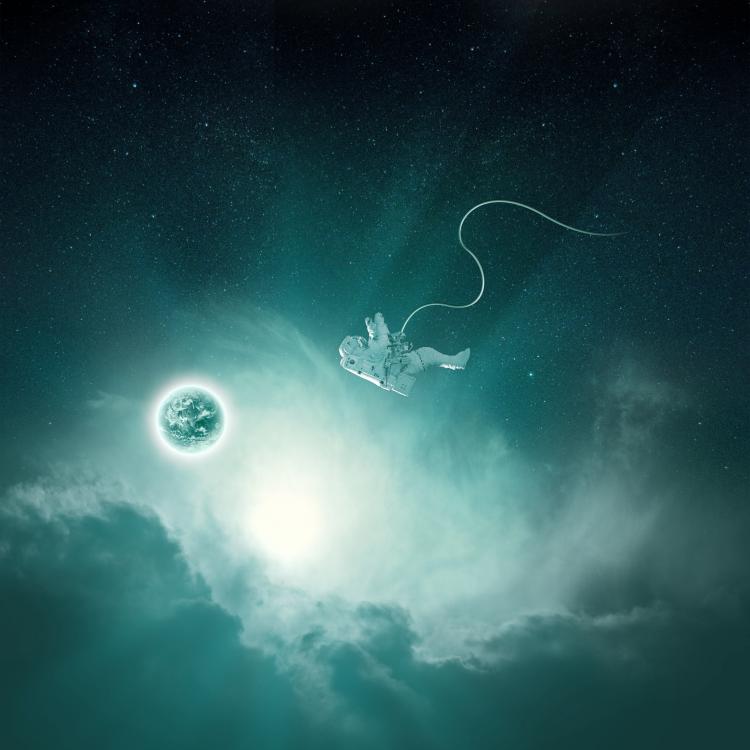Search the Community
Showing results for tags 'orchestral'.
-
I made an orchestral piece in November 2017 called "A night in gotham city". I hope you like it!
- 3 replies
-
- 2
-

-
- orchestral
- movie music
-
(and 1 more)
Tagged with:
-
Barbarossa is the third movement of this World War Two-themed symphony about Nazi Germany's ill-fated campaign to extend its Blitzkrieg into Russia in 1941, which subsequently opened the door for the Allies to fight the German advance on two fronts. Barbarossa ultimately failed due to the Red Army's resolve to fight and Russia's vast territory was too great to conquer. Please let me know what you think about this piece that was composed and sequenced entirely on the Roland FA-06 Workstation and recorded on the Tascam SD-24. I did some light processing with Audacity.
- 2 replies
-
- world war 2
- world war two
-
(and 5 more)
Tagged with:
-
Hi! 🙂 New guy here, hobbyist composer with barely any musical education. 😅 In the past I've played a bit of piano and more recently tried to learn to play guitar with poor results. 😅 Looking forward to learn from you folks and maybe even collaborate? 🙂 But first things first, I thought it made sense to show where I'm currently at. Here's a demo that I've compiled recently: Essentially, I've collected the best of my drafts which I hesitated to call done, as I usually do, and compiled them into a music demo in order that hopefully makes some sense... I also have a soundcloud account, though it is pretty empty for the reason stated above... 😅 Any tips and suggestions are welcome of course, I'll be hanging around reading and trying to improve. 🙂
- 3 replies
-
- 1
-

-
- movie
- electronic
-
(and 3 more)
Tagged with:
-
(There are three first movement drafts on this thread, and the first movement has been posted here for feedback, for second movement drafts scroll down) Hi! I am writing this "Symphonia Triumphalis" (Triumphant Symphony) and I decided to share the draft of the intro+expo. Some possible feedback I'd like to get: Did you like the piece personally overall? I would be glad if you highlighted your favorites and least favorites. What did you think of the orchestration? What did you think of my use of motives and themes? Any other feedback you'd like to give. Suggestions for the dev or the recap - some things you think could work.Symphonia Triumphalis.pdf Symphonia Triumphalis.mp3
-
Hello everyone, This is what I've been working on for the past month. I hope you all know Rm Rizal(I think we can all agree his kintab is superbly poetic and his use of harmony is awesome). Here is the link to his channel if you guys never heard: https://www.youtube.com/@RMRizalMusic. Anyways, I made an arrangement on one of his older piece called "La Valse Bienheureuse d'Anna Sofia". I heard the piece when it came out around 2021 and still think it's beautiful. Since I didn't compose the material, my general concerns lie with orchrestration(balance, transcribing, "foreground & background"), variety in color and capturing the "vibe" of the piece. To me, It sounds very "Pixar-esque" and I wanted to go for that aesthetic. I also cut out a bit of material from Rm Rizal's original to pinpoint the main ideas and keep the flow of attention going. Here is Rizal's Original piano version, Here is my arrangement: Score video, Note: Middle of A section currently keeps crashing in musescore. Luckily I was able to save it in IMovie, so I did some splicing to incorporate it with the current score. That being said, you're not going see that part in the current score I have. Thank you all.
-
Hi forum, You'll find below the second movement of my third symphony (1st movement in another previous post). Have a nice day 🙂
-
Variations on a Theme from "Dragon's Lair"
AlexeySavelyev posted a topic in Competition Hall of Fame
Here is the mockup of a piece I submitted to "From Bits to Bangers". Spent a month composing this going through some research first and then actually composing, because I didn't know a thing about "Dragon's Lair". Apparently it is a really hard-to-beat 1983 game where you need to go through different levels and fight a dragon in the end to save your princess (Daphne). I didn't know that my description would end up in submissions thread (might've misread the OP), because I would've guided listeners a little better than I did, but anyways here is the original description: "So I took Dragon's Lair track here. This is free variational form with developement in different fields. I went from studying the soundtrack and noticing it's medieval feel, so I went for this too at first with my work and it goes sort of from just typical folk Dorian scale to a sort of modern polytonic harmony in the end. This track played at a dungeon level, so I wanted to represent that too, going with some nocturnal feeling, developing into some conflict in the end which resolves and goes back to Dorian scale in the end, referencing the 'peaceful' beginning. " Originally named Dungeon Variations, though it's not the dungeons, that the original track plays on, it's in the mines, but whatever 😄 There are a few moments that I was considering while composing this: 1. So first thing is the context, because it is a story based music, so it has to follow context heavily. Medieval context is a must, and an original track asks for a ballade like approach. Hence why I was questioning this "From Bits to Ballads" offence by one of the judges, because you simply can't YOLO this track (or Kirby's too) and go for heavy metal Castlevania-like approach. You can, of course, but that would not be a good "Execution of a Given Challenge" in my head. 2. Characteristics of the initial theme: all in downward chromatism. In the game the hero dives more and more into the depths of the castle and this chromatism in theme supports this feeling when you enter the mines level. I wanted to retain this and develop as I can. 3. Nocturnal feeling is a must. Supporting major-minor relations and going from folk Dorian scale to heavy polytonical textures in the end introducing the main theme has to retain that spooky feeling of the original. So by all that I had Theme 1 (T1) which is simply a variated form of the original melody. Theme 2 (T2) which is the original melody by itself. And characteristic chromatic downwards motion. All in all creating story through chromatic motion downwards (spooky, sad, nocturnal) or diatonic (representing the hero, good, radiant, light), just to be there as a certain contrast to the chromatic motion. 1. Piece starts off with the intro, setting the medieval mood of T1 in Dorian Scale, which uses diatonic relations for setting up a mood. Later on introducing main hero fanfares later on entering the castle and facing his fate. You can hear chromatic downwards motion in clarinets in the woodwinds line after fanfares. 2. Initial setup of a original theme. Getting introduced to a T2, variated from the original rhythmically in a clear nocturnal texture, followed by developement using chromatic motion downwards in lower register at the same time as diatonic motion upwards in the higher registers. 3. Modulation to D minor with chromatic downwards motion setting up the next section, which uses variated form of T2 setting up uncomfortable mood. Constant changes in lows between I and VII# makes sure this feeling stays there. Thick harmonies in clarinets and horns are used to enhance that feeling of unease. All that is supported by pedal tones in Trumpet and Trombone lines. Dangers of the castle seems to evade as Trumpet introduces a diatonic upwards motion melody. 4. Diatonic upwards motion in Viola solo line now features I-VIm harmony from the original theme, indicating that even in the light there is darkness now and the new danger might be approaching. After that flute line refers the T2 again, variated to be slower rhythmically as bassoon line refers T1 one last time before the culmination. This section lives in a distinctive contrast to sections 3 and 5. 5. Culmination itself uses the original theme in its full form. With the initial melody there are two counterpoints. One is in violas and clarinets, and the other one is in trumpet line. Both are there to support the final battle mood. Trumpet is enhancing strong harmonies while constant moving. Double tonguing in flutes is introduced to reference the initial track's melody delay FX. Ending is open. After all you don't know if you've beaten the dragon, or have to reset the whole game and repeat your path. If former - horn solo just sends you back to the beginning, if latter - it means you are in peace again with your love interest and can live happilly ever after in your medieval magical fantasy world 😄 Thanks for reading and listening. I hope you enjoyed. Sincerely, Alexey.-
- orchestral
- from bits to bangers
-
(and 1 more)
Tagged with:
-
Hi 🙂 I present you the first movement of my new symphony ; hope you'll like it. https://on.soundcloud.com/zctEc
-
The Witch's Couldron Composition for a game trailer Published on YouTube: https://youtu.be/HewE5wg6yUQ
-
Hey everyone! 🙂 This is my first post in the forum, so i greet you all. In this post, I present for review one of my last compositions, called "Into the mystical cave". It is small in duration and it has a soundtrack-like approach as it visualizes a trip through a mystical cave...I tried to put into the music the awe and wonder of exploring beautiful subterranean chambers. I use instruments from all families of the orchestra (and percussion). I would like your constructive opinions on the composition! Enjoy!
- 9 replies
-
- 2
-

-
- orchestral
- ost
-
(and 1 more)
Tagged with:
-
Age of Discovery My first finished project. Judge strongly:) Published on YouTube: https://youtu.be/DhPf-od8LgM
-
Walk In Dream Here I tried work more with textures and SFX. Published on YouTube: https://youtu.be/2O9bGby01S0
- 2 replies
-
- mysterious
- textural
-
(and 1 more)
Tagged with:
-
Farewell Final project of music composing course on Evenant Published on YouTube: https://youtu.be/8qyOz-GaYKs
- 2 replies
-
- cinematic
- orchestral
-
(and 1 more)
Tagged with:
-
I was rummaging through my bag of misfit music and thought someone might enjoy this short little waltz I composed a few years ago. It was from back when I was learning my DAW (Sonar 8.5.) I've never updated Sonar because it never crashes and just works really well. Like the old saying goes; "If it ain't broke don't fix it". It was very frustrating for me learning all the techie stuff in Sonar and I still barely know what I'm doing. Anyway, enjoy! -Rick
- 6 replies
-
- 2
-

-
- orchestral
- instrumental
-
(and 2 more)
Tagged with:
-
Fantasy Two -- part 1.mp3 Fantasy Two -- part 2.mp3 Przyjazna - Fantasy Two.pdf Hello all, I thought I would share my sketches of a new orchestral work, so called "Fantasy Two" for the time being, after an older work of mine titled "Fantasy" that I feel it bears similarities to. I wrote the section in the second audio file before the first, but I would like to fit it somewhere in the middle of the piece if it isn't tedious. I have definitely not polished the dynamics yet and could refine my harmonies. Any feedback on what I have so far and suggestions on what direction to take this piece in would be greatly appreciated -- I am a bit stuck. One concern I have is that I might be building too much tension and emotion too quickly. Would you agree? Thank you! ~ Gwendolyn (formerly MissCello)
-
One of my first symphonic/orchestral compositions. Please don't be shy and give an honest feedback. Constructive criticisms are very warmly welcome. Also can anyone suggest me some theoretical topics to master for orchestral/large ensemble writing?
-
So, I'm sharing my current project here mainly out of a textural concern that occurs around the 2 minute mark. It's not that I don't like the texture or feel it lacks any compositional/orchestrational merit -I think it's quite strong to be honest. My concern is that I'm not sure how to take this texture. The idea of the prelude to this suite for orchestra is to present a theme from each of the suite movements -which this does well. However, I'm concerned that the ending is a bit aurally new to the ears -even if we take minimalist standards. The setup occurs with a duet between the oboe and clarinet which lays the groundwork for a steady pulse by the winds, followed by a tightly spaced cluster chord in the winds that gradually rises in volume and chromatic intensity till the trumpets punctuate the texture with 4 notes in succession (echoed by horns an eighth note apart). This rises in volume until the full orchestra holds the final chord to its loudest. I love it -but what I'm afraid of is that the landscape is difficult. It took me a few days to start the 2nd movement. Is it too intense? Is the texture too new? Should I rewrite the prelude? EDIT: Forgot to mention this is scored for chamber orchestra (1.1.1.1,2 horns, 1 trumpet, Timpani, Strings) -the score isn't final yet! POSTEDIT: Added the second movement for some clarity.
-
So, I'm looking for commentary and opinion.... I've decided to begin another Orchestral work -in the hopes of having one around to submit to competitions in the future. I've decided that I want to create an orchestral tone poem depicting the creation as mention in the book of Bereshit (Genesis). My take is a multilayered approach that includes incorporating concepts derived from Quantum Mechanical understanding of matter from both the macro and microcosmic understanding. Thus, it's going to be a rather large scale work in scope that incorporates many different compositional techniques which I've already begun sketching out. Anyways, what I'd like to glean from others on here is your own personal takes on Haydn's Creation. Also, if any of you have any other works that deal with the topic of creation.... please share in. Haydn's Creation
-
Hi everyone! Here is a piece that I wrote called "The Dream-Quest of Unknown Kadath", it is inspired by the novel wrote in 1927 by American writter H.P. Lovecraft. I wanted to describe this weird winded-dream in which Lovecraft plunges his character Randolph Carter into. I've used some weird and unusual progressions and ambient sounds through the piece to try and describe this strange and dreamy universe of the novella. Any feedback from composition to production is much appreciated!
-
You may need to turn your speakers/headphones up, i've been having some problems bringing my mix level up. Let me know what you think.
- 8 replies
-
- 2
-

-
- piano
- orchestral
-
(and 3 more)
Tagged with:
-
Hello, I am the composer for my artist project "Vivintinn". I create Orchestral/World/Electronic music with the aim of making storytelling compositions. I have most of my published works on Spotify for ease of access. I would love to connect with other composers and hear what other people think of the music, the production, the song structure, the storytelling component, or any other tips you might have. I will note that the music I create is primary for listening enjoyment and breaks some rules rather than following traditional music theory. I've attached a mp3 of my most recent single, but I would love if you also checked out my other compostions via the Spotify link. I hope to hear back from you all soon! Spotify:
- 1 reply
-
- orchestral
- halloween
-
(and 1 more)
Tagged with:
-
Hi everyone! I wanted to share this piece that I wrote called "Enchanted Forest", isnpired by the music for fantasy games. I wanted to describe a dangerous walk through an enchanted forest. I chose to represent that by having the melody and the harmony not stay in one key, but rather switch between different keys and modes, as if the melody "got lost" in the forest. Any feedback on everything (from composition to mixing and mastering) is appreciated!
-
This is my first time making this kind of music so any comments and feedbacks are appreciated!
-
Hey, first song I am sharing here, I hope you enjoy and PLS feel free to give me some feedback. YT: https://youtu.be/l2XwqvFK540
- 4 replies
-
- orchestral
- space
-
(and 2 more)
Tagged with:










